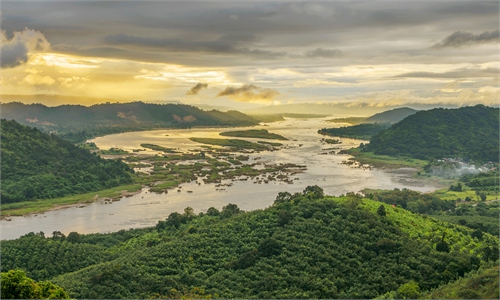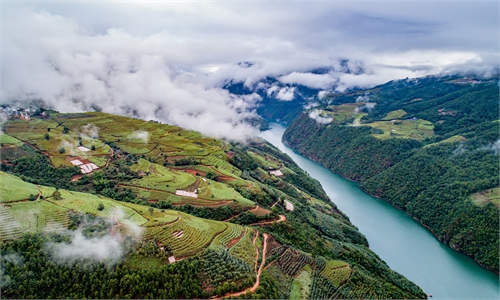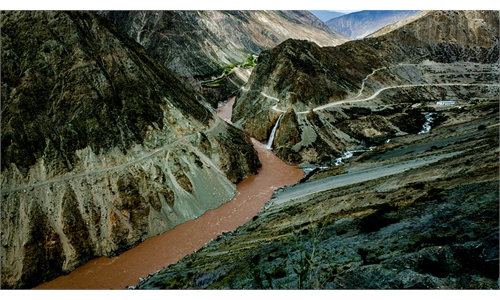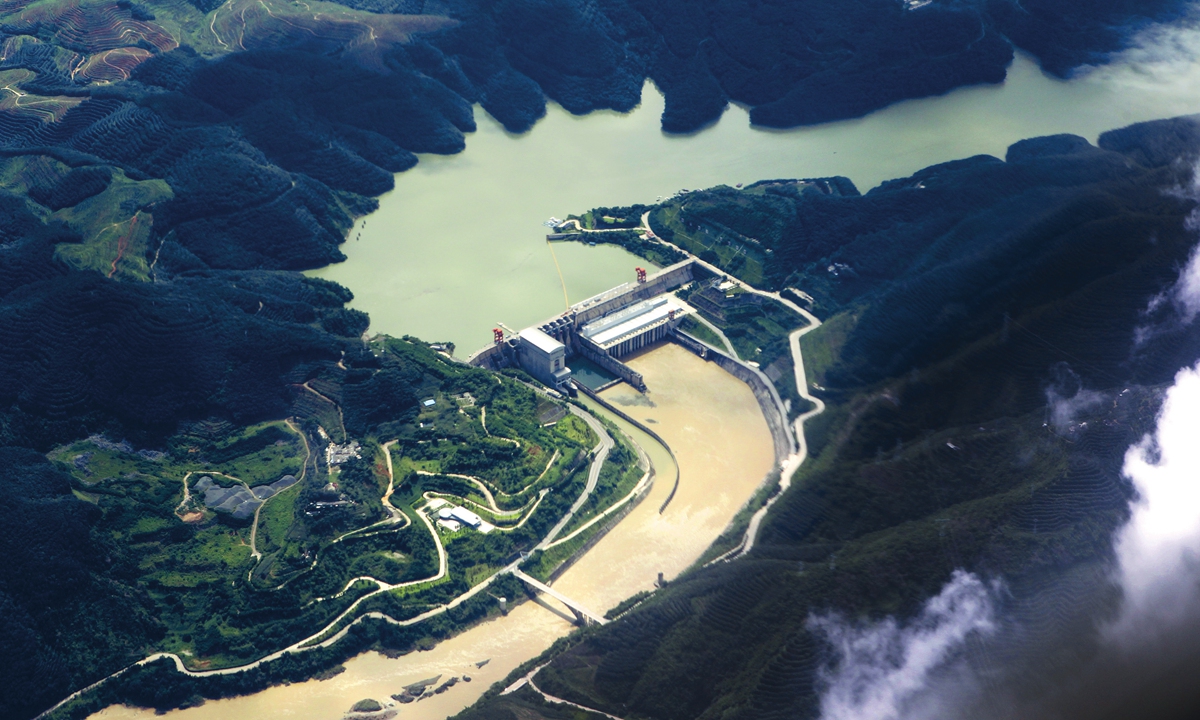
The Jinghong Hydropower Station on the Lancang River in Southwest China's Yunnan Province Photo: IC
While its own people in Texas are in dire straits amid an electricity-related crisis, the US has turned its attention to the Mekong water resource issue, while turning a blind eye to China's efforts to resolve the problems.
Ned Price, US State Department spokesperson, raised "concerns over the dropping water levels of the Mekong River," in a tweet on February 23, after the Mekong River Commission (MRC) in mid-February expressed concern that the water level in the river had come down to "alarming levels" due to water control in upstream dams in China. The MRC said the lower water levels endanger the livelihoods of downstream people.
The MRC suggested the water shortfall since the beginning of the year is mainly because of lower rainfall, upstream flow changes, hydropower operations in tributaries, and outflow restrictions from the upstream Jinghong dam in Southwest China's Yunnan Province.
However, this statement did not reflect the full facts and scientific conclusions, and it ignored the contribution of upstream hydropower projects.
The latest data shows that for the past two months, Jinghong station, one of the main hydropower stations on the Lancang River, upper half of Mekong River, has been releasing more water than the river's average natural flow rate recorded during the Mekong River's current dry season.
Higher discharge than natural level
In fact, the average discharge of Jinghong Hydropower Station this January was 1,243 cubic meters per second (m3/s), 78.6 percent more than the annual average natural discharge of 696 m3/s, and 16.2 percent more than the same period last year, according to China's official water monitoring data.
Also, February saw a similar trend, with the monthly average outbound flow from Jinghong reaching 1,026 m3/s, 75.1 percent more than the annual average natural flow of 586 m3/s in the month.
This suggests that the construction of Chinese dams on Lancang River has alleviated the drought downstream.
Low flow is common during the dry season from December to May due to monsoon climate characteristics. The runoff in the rainy season from June to November is usually 3.7 times that of the dry season. The Lancang cascade reservoirs store flood water in the rainy season and discharge more water in the dry season, which effectively increases the dry season streamflow of the Mekong River.
Considering that the demand for agricultural water in the Mekong sub-region peaks in the dry season, and the drought statistically occurs more in the dry season than in the wet season, the water supplementary role of Lancang reservoir cascade can generally alleviate drought occurring in the Mekong sub-region, according to a research report by Tian Fuqiang, a leading scholar and researcher on Mekong River water resources at Tsinghua University.
The MRC on February 22 clarified that the water levels of the Mekong River have started increasing following a month-long drop precipitated by power grid maintenance at the Jinghong Hydropower Station and compounded by lower rainfall.
The MRC recognized that the data discrepancy on outflow estimates between theirs and the one given by China's official conclusion was caused by different methods in discharge calculation. The MRC and China's Ministry of Water Resources are now working together to provide more consistent water discharge information, it said.

A woman sells fish of the Mekong River at a market in Vientiane, Laos in October 2020. Photo: Xinhua
Maximum effect in a limited role
It is notable that the flow in China's basin only accounts for 13.5 percent of the total runoff of the Mekong River, with very limited impact on the lower reaches of the Mekong River. Also, the discharge decline lasts for a very short period, which is unlikely to cause serious damage to the agricultural and fishery livelihoods of downstream countries, despite some foreign media reports, Zhai Kun, an expert on the Mekong region with the School of International Studies at Peking University, told the Global Times.
When severe droughts occur in the lower Mekong River, reservoirs of the whole basin should play a role, with the cooperation of all countries, not just China, Zhai said.
According to the runoff composition analysis, the contribution rate of Lancang River to mainstream discharge decreases to 39.5 percent at Nong Khai station located in Thailand, and continues to decrease to 14.3 percent at Cambodian Stung Treng station.
While, reservoirs in the downstream tributaries of the Mekong River play an increasing important role in runoff regulation for the mainstream as its overall storage capacity reaches more than 37.2 billion m3, according to the data from a global research partnership CGIAR program on Water, Land and Ecosystems.
It's recommended that riparian countries strengthen relevant research on joint operation of reservoirs in the upstream and downstream as well as in the mainstream and tributaries, so as to make good use of these reservoirs and provide technical support for the benefits of the whole basin.
To contribute to the collaborative efforts, China has made good on its promise to share year-round hydrological data for the upper reaches of the Mekong River with the opening of an online information sharing platform on November 30, 2020.
The platform aims to provide reliable forecasting and early warning services related to floods and droughts. The data was mainly collected by two key hydrological stations located on the upper Mekong basin at Yunjinghong and on a tributary river at Manan.
It is normal that upstream and downstream countries have different, even conflicting, interests in the development and utilization of cross-border water resources. However, there is no serious water conflict in the Lancang-Mekong River, contrary to the views of some Western media reports and scholars, Zhai noted.
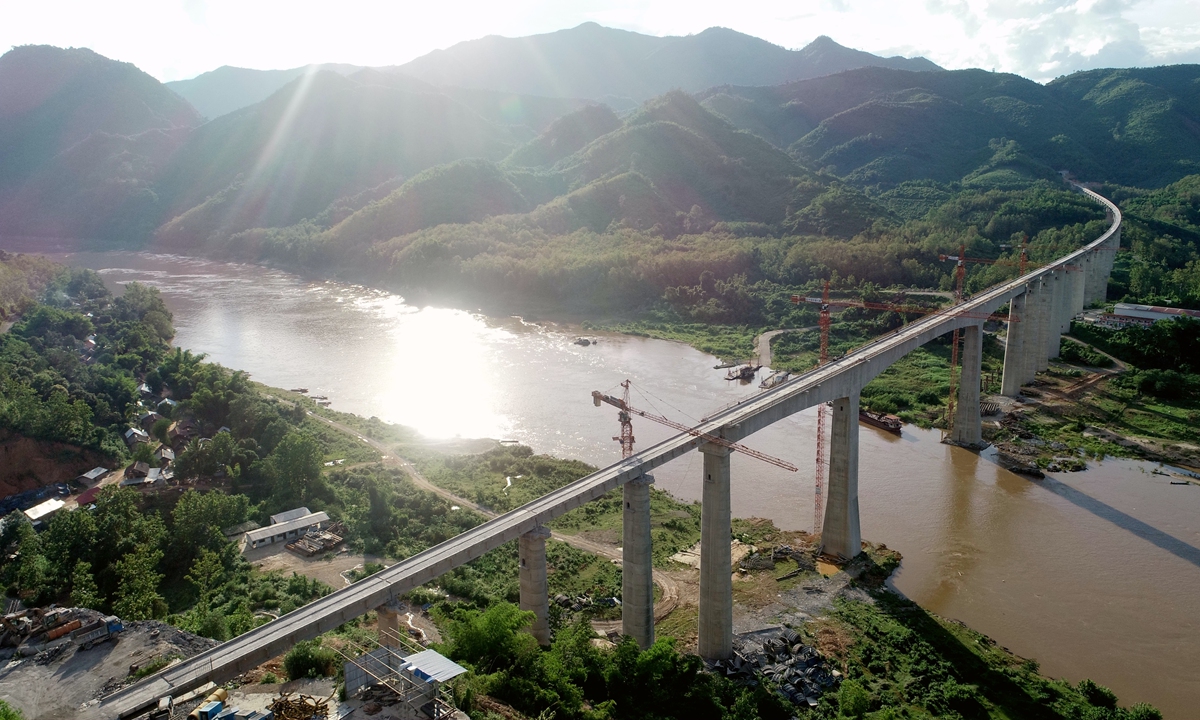
The Mekong River section in Laos Photo: Xinhua
In fact, China and downstream countries have all made efforts to deepen mutual trust and cooperation on shared water resources.Chinese dams played a recharging role in the dry season drought that occurred in the Mekong River basin in 2016 and 2019. According to a joint report by the China Institute of Water Resources and Hydropower Research (IWHR) and the MRC in 2016, the Lancang River cascade reservoir added 12.6 billion cubic meters of water to the lower reaches during the drought, and its contribution was also recognized by the governments and people of the lower reaches.
In recent years, the increasing extreme weather in the Mekong River region has made it increasingly difficult for the MRC to forecast hydrological information at the technical level. In addition, certain countries outside the region have set up a so-called "Mekong Dam Monitor" project, which puts great pressure on the MRC to make more scientific conclusions, Zhai noted.
"This pressure sometimes leads the MRC to draw exaggerated conclusions without conducting investigations and studies based on objective facts. But it is pardonable as we all care about the livelihoods of people in downstream countries," Zhai said.
The so-called "Mekong Dam Monitor" was a US State Council-funded program run by the US-backed institution Stimson Center Southeast Asia, which has been a persistent critic of Mekong river issues in recent years.
Started on December 15, 2020, the program monitored the hydrological, climatic information, and satellite aerial photographs of 31 dams on the river.
The Center's program director Brian Eyler repeatedly lambasted China in media interviews, but Chinese observers and experts have questioned the project's professional standards and motivations, as it was seen as an attempt to contain China in the region by hyping China's "dam threat," citing only weak evidence and sources.
"The MRC, which has been working for years to obtain the hydrological data of the Mekong River, still has data errors in its conclusions, probably due to backward estimation tools. The experts in the river region have reasons to be skeptical of the 'Mekong Dam Monitor,' the project rushed through by a team from outside the region," Zhai said.

